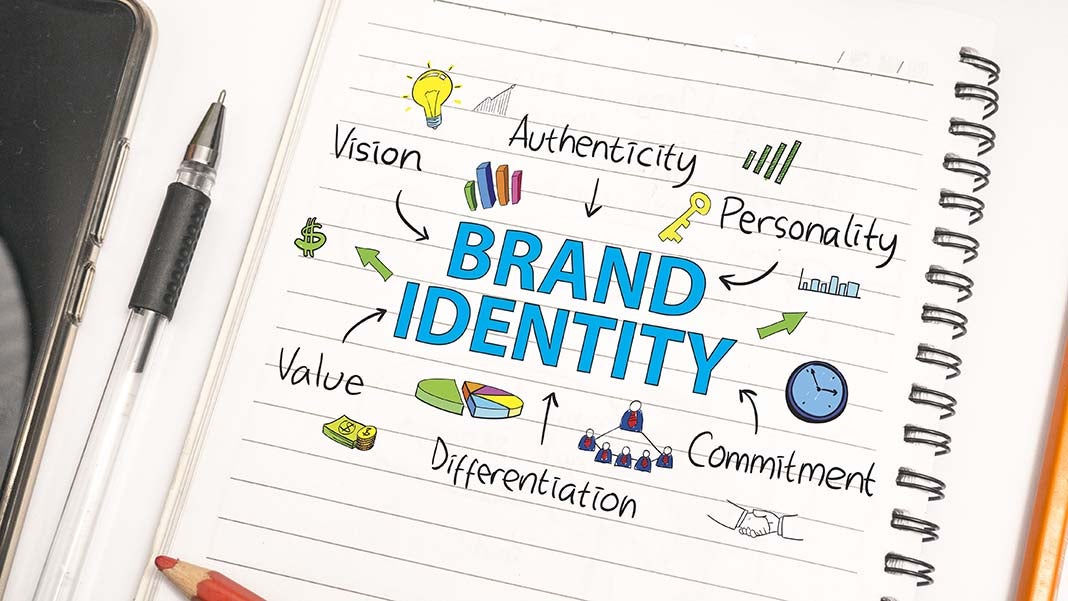
In any type of business, building a strong brand identity is a key part of creating a thriving company. That goes double for small businesses, who rely even more on their reputation and the goodwill of their customers than their larger competitors do. Still, building a brand’s identity from the ground up is no easy task, and it takes plenty of effort to maintain once in place.
The biggest hurdle small businesses face in their drive to establish a brand identity, though, is knowing where exactly to begin. To help them along, here are four critical steps to developing a brand identity and how to make sure it sticks. Let’s get started.
1. Understand Your Goals and Values
The first thing a small business must do when developing a brand identity is to figure out exactly what they’re trying to accomplish. Although that may seem obvious to do so, a surprising number of companies base their branding strategies on what they believe consumers want, rather than on what the business itself is prepared to offer. That’s a mistake because attempting to create a brand identity that’s out of alignment with the business’s goals and values almost guarantees that consumers will ignore your message. To get started, answer these simple questions:
- What is the mission of the business?
- How does the business plan to accomplish that mission?
- Why should that matter to consumers?
- What values differentiate the business from the competition?
With those questions answered it should be possible to develop a clear picture of the company’s goals and values, which will become the guidelines for the brand’s identity. When you consider that Amazon used their company mission statement to create a brand identity that is now universally known—it should be obvious why this step is critical.
2. Personify the Mission
The second step to create a brand identity for a small business is to personify the mission and goals identified in the first step. It’s important to realize that a brand identity is akin to an individual’s identity, so imagining the business as a living, breathing entity can help to clarify things quite a bit. Ask yourself:
- If the business were a person, how would it talk?
- What would its personality be?
- How would it treat the people around it?
The answers to these questions can help to establish things like how company logos will look, what colors will be used, and the tone used for marketing communications, social media accounts, and advertising efforts.
3. Create Defined Brand Guidelines
When seeking to build a brand identity, consistency is essential. That’s why step three in the process is to create a brand book that defines everything about how the company will present itself to the world. Using the information gleaned in the first two steps, build a brand book that includes:
- All company logos and variants
- The primary, secondary, and tertiary colors that the brand will use
- The primary, secondary, and tertiary fonts the brand will use
- A set of guidelines for tone and writing style for all communications
- Any associated images, catchphrases, or taglines for the brand
In short, a small business brand book should contain everything needed to act as a permanent and all-encompassing guideline for all marketing and advertising purposes going forward. With this in hand, the brand’s identity will remain consistent throughout all channels and it will be possible to make a lasting impression on consumers.
4. Use Feedback to Adjust Tactics
The fourth and most important step in establishing a brand identity is to collect reliable feedback about how it’s being received. The data that’s collected can then inform any tweaks or changes to the strategy being used to spread the brand’s message to consumers. To do this, small businesses must create multiple channels for customer feedback, including a survey effort that’s custom tailored to answer these key questions:
- Do customer impressions of the brand align with the message it’s trying to send?
- Do customers feel that they can identify with the brand’s image and personality?
- Do they like the message they’re receiving?
Maintaining an open feedback channel also makes it possible for a business to iterate and evolve its branding strategy to reinforce its identity or to alter it in reaction to changing consumer needs and desires. In short, it is feedback that helps to keep the brand’s identity aligned with its target market, and that’s a critical factor in long-term branding success.
Keep Up the Effort
Once a small business undertakes these steps to create a brand identity, the only thing left to do is to continue to reinforce it day in and day out over the course of time. It is this consistent repetition that cements the brand identity into the minds of consumers. It’s also the kind of long-term effort that requires a top-to-bottom organizational buy-in, so it’s something that small businesses must reinforce internally to succeed. That, of course, is another challenge—but with the brand identity established, it’s one most small businesses would relish accepting.
2764 Views












